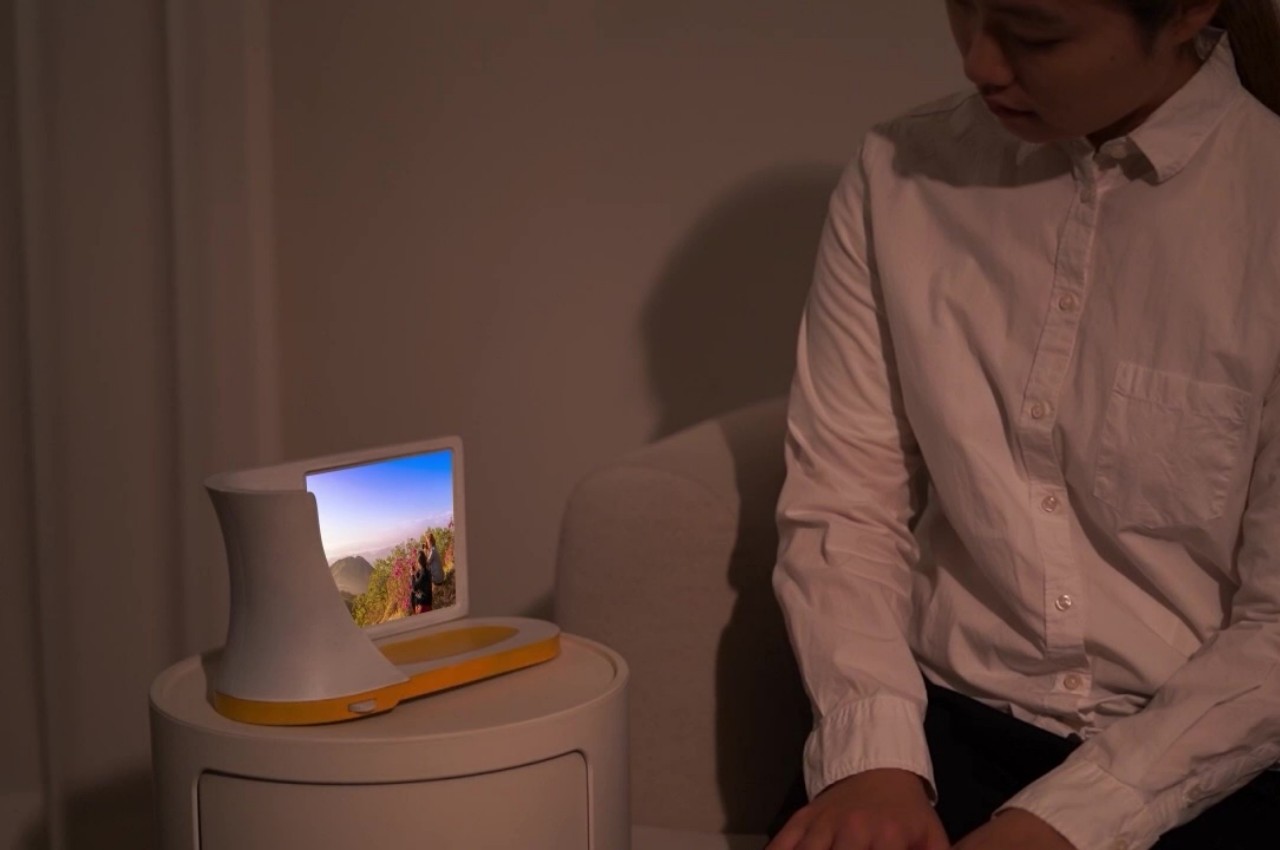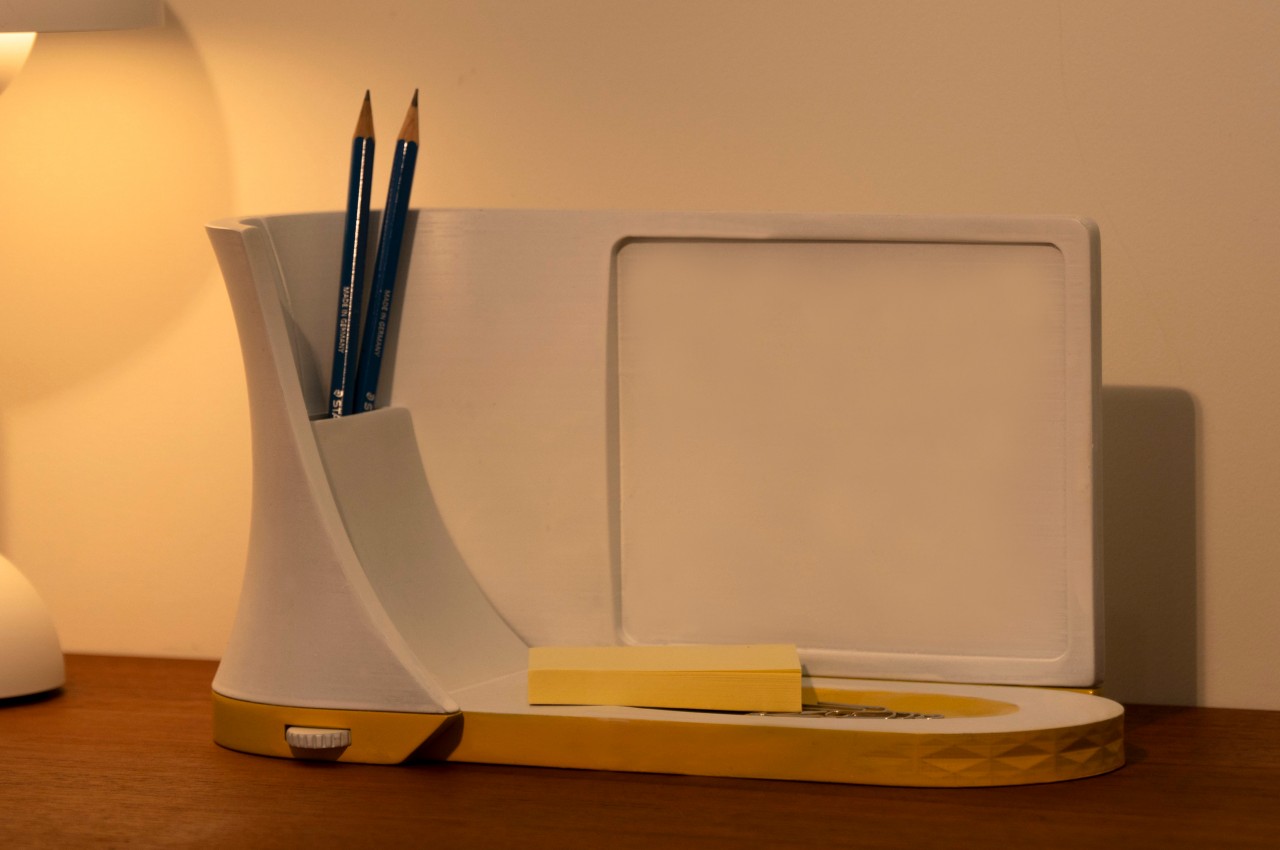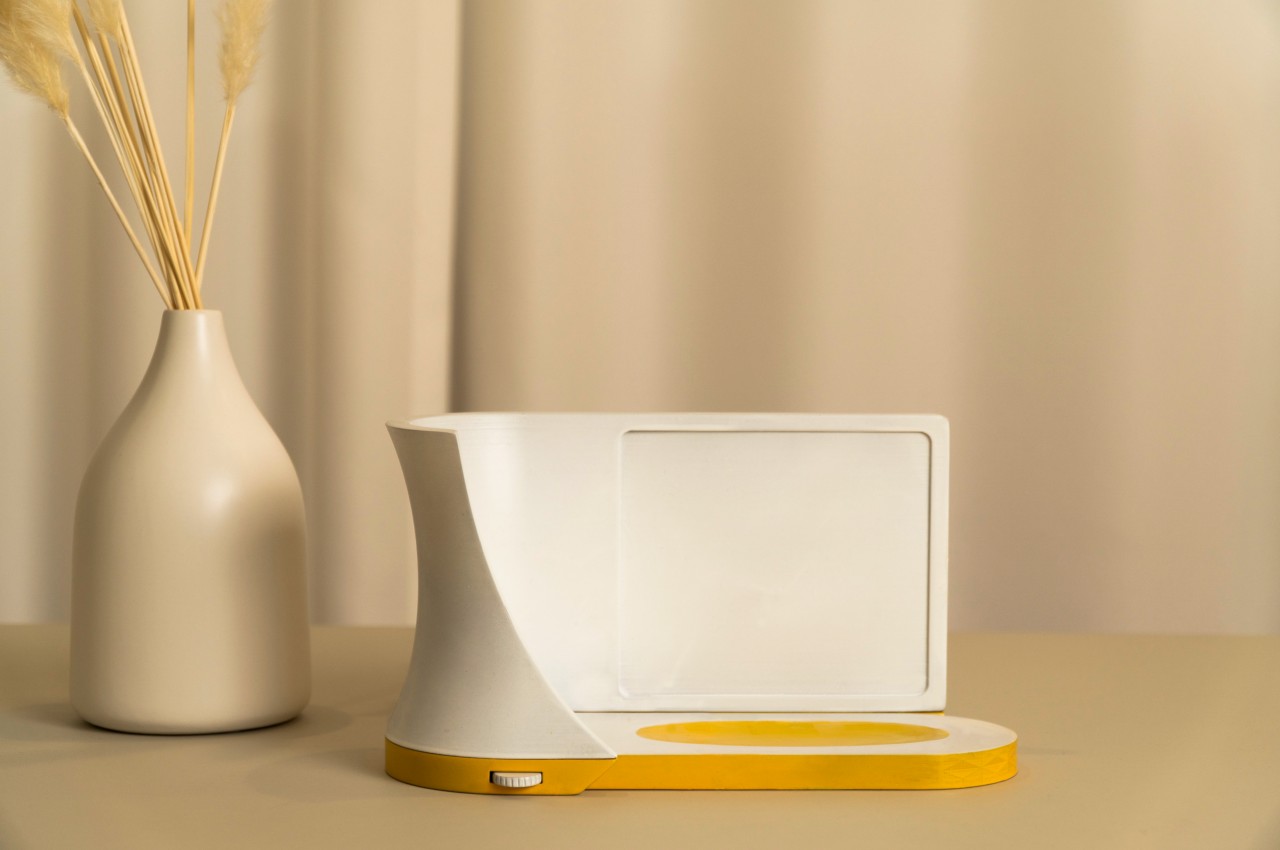
Taking photos and recording videos have become one of the most important uses of today’s smartphones, so much so that manufacturers have enthroned cameras in their designs. These photos often stay on the phone, though, and are usually shared on social media for others to see. Not everyone, however, is on Facebook or Instagram, and even those that do have accounts won’t always be able to show off and share the most important photos from their phone galleries. Photo frames are perfect for that kind of purpose, and this desk accessory concept tries to offer a more dynamic way of taking a trip down memory lane while also serving some practical use to help keep your desk tidy.
Designers: Yangwoo Choi, Hanyoung Lee


It’s pretty convenient to take photos with our smartphones and view them on the same device. After all, we have our smartphones almost always with us. On the other hand, it’s actually harder to share those precious moments with others without handing the phone over to them or relying on social media. At home or in the office, you might want to have something a little more visible and more permanent, which is what photo frames are for. Flash back is a concept that meets that need, but with a few twists that make it a little more interesting.
Flash back is technically a digital photo frame that can show one or more photos, probably from your phone’s gallery. Unlike typical digital frames, however, the device concept is seemingly locked to a very specific presentation mode. It slowly scrolls through the photos sideways, more like a film reel than a slideshow. In fact, the curved shape of the body is an ode to the physical medium, giving it an old-school feel while obviously being modern.
The device, however, is more than just a digital photo frame. It can also serve as a pen holder, with a basin for clips and small items that would otherwise litter your desk. Or it could hold any other item on your bedside table. Even when not used this way, the product’s design is aesthetic enough to serve as a kind of desk decoration, though it would certainly be wasting its potential that way.
Conversely, Flash back can also be used as a plain desk accessory without the photo display. It only starts showing the images only when someone is nearby, saving power when no one is around to appreciate the photos anyway. Presumably, there will be settings that can let you set it to on or off for the time being, though again, you won’t be maximizing its design if you only use half its features. It’s admittedly a simple design that combines functionality found in separate products, but it’s exactly that fusion of function with a pleasant, eye-catching form that makes this concept worth its salt.